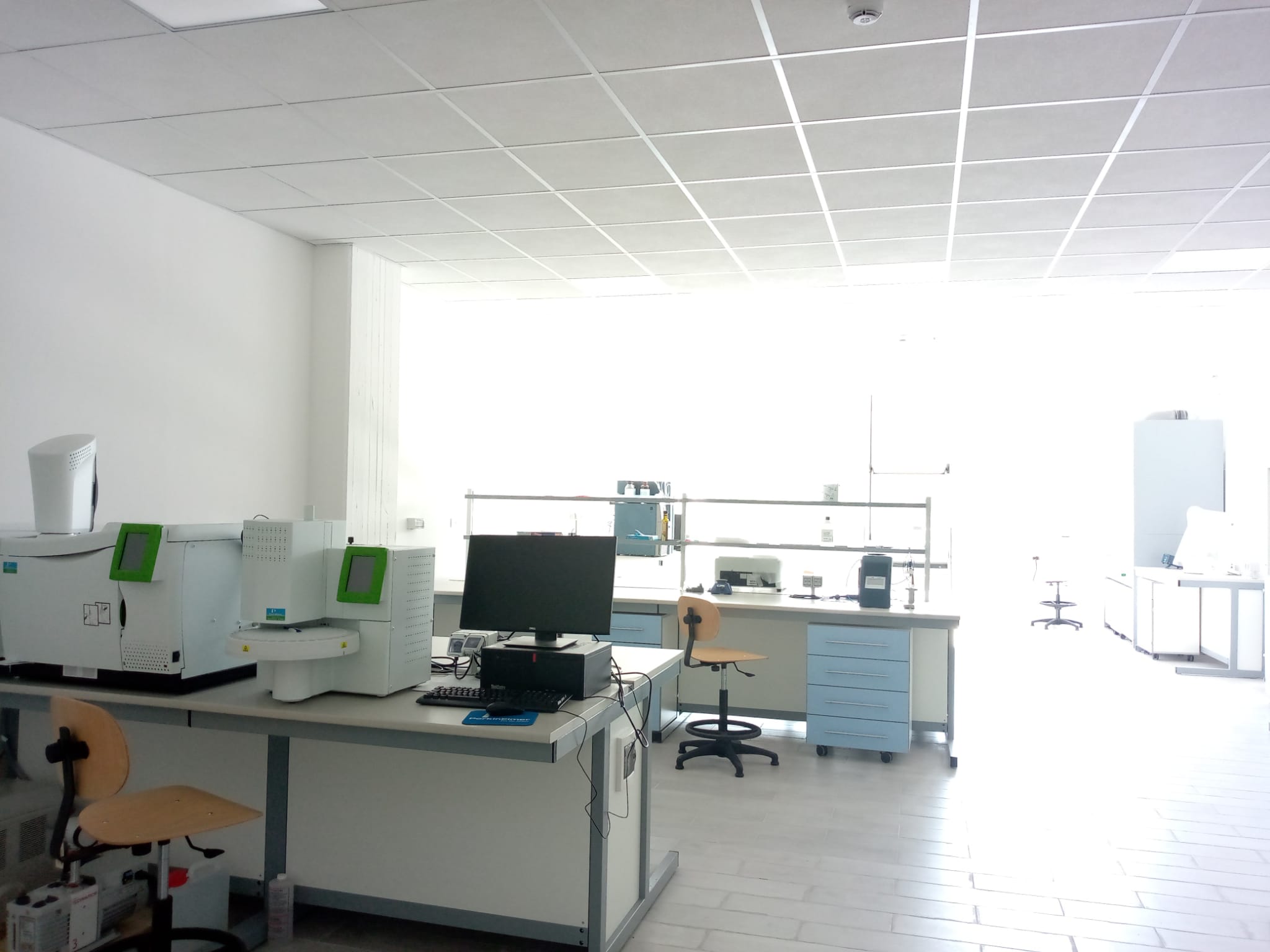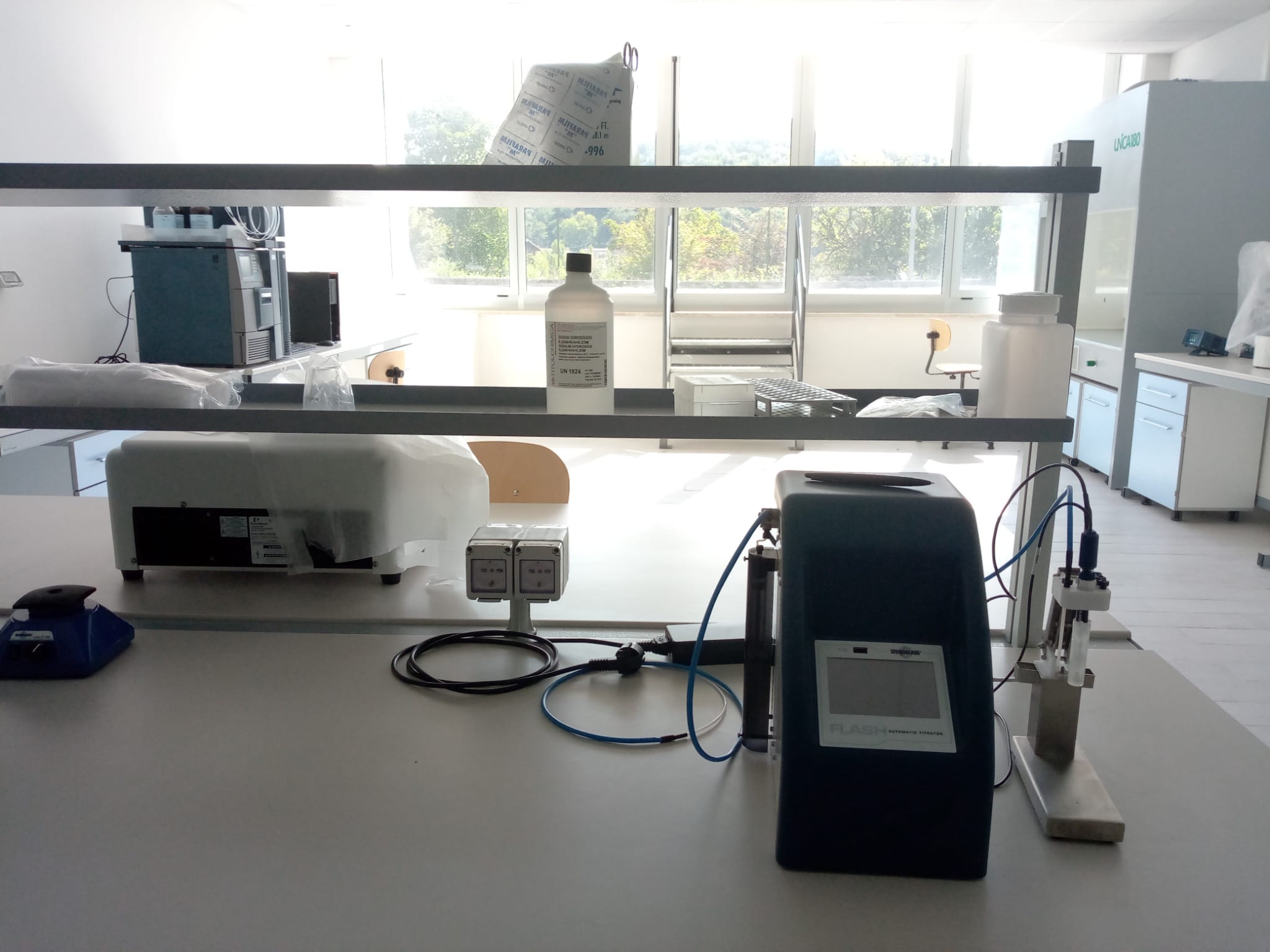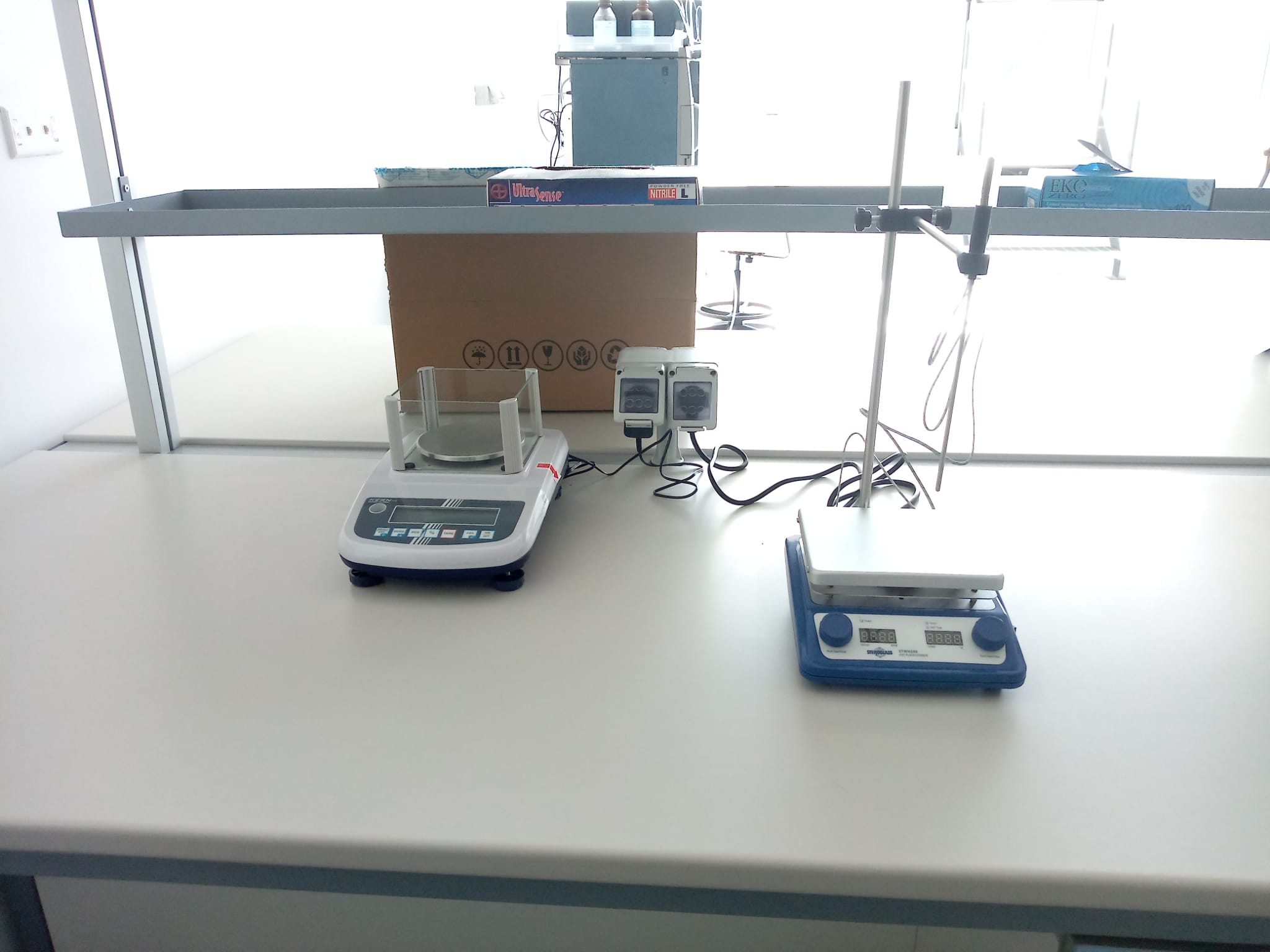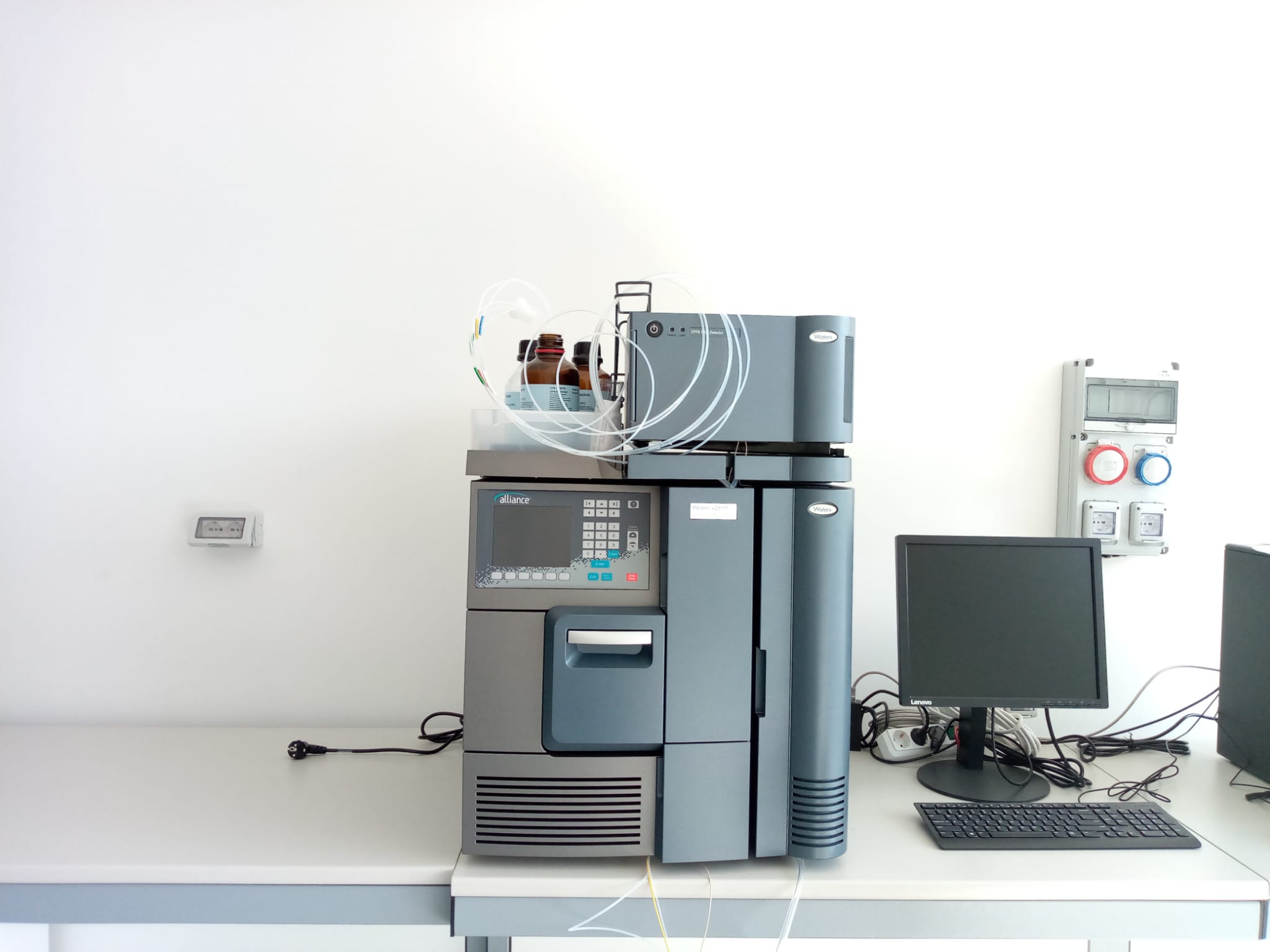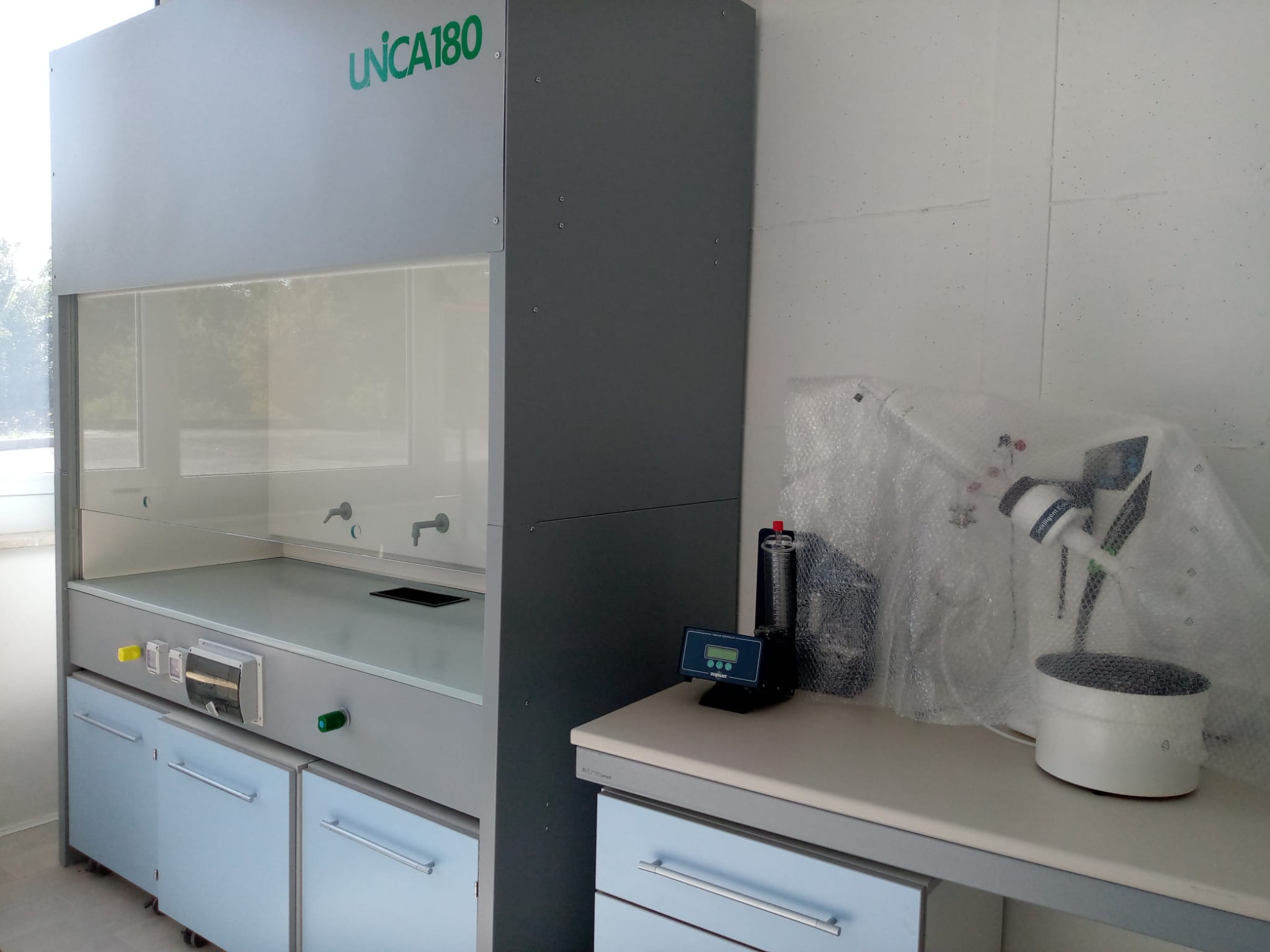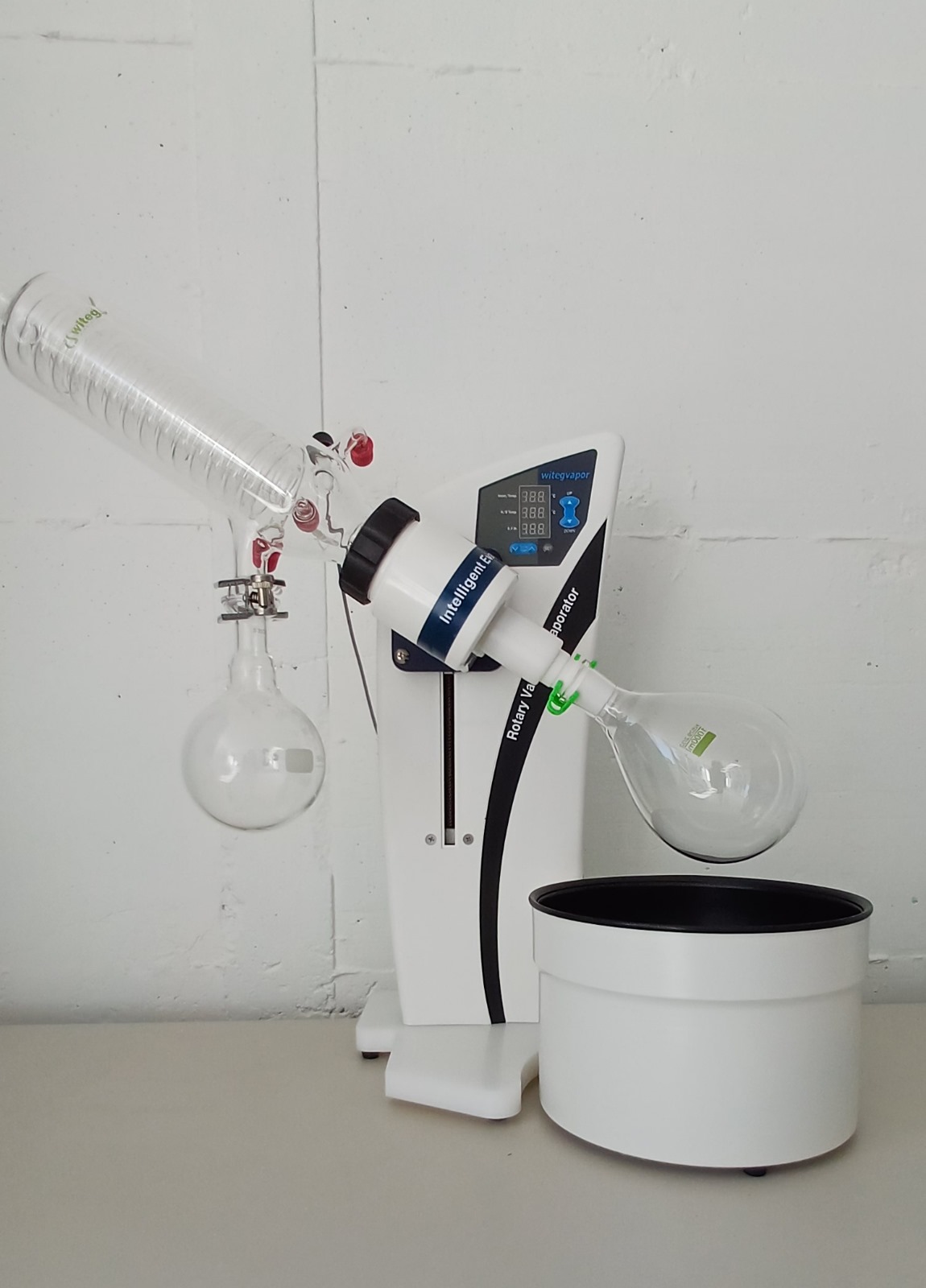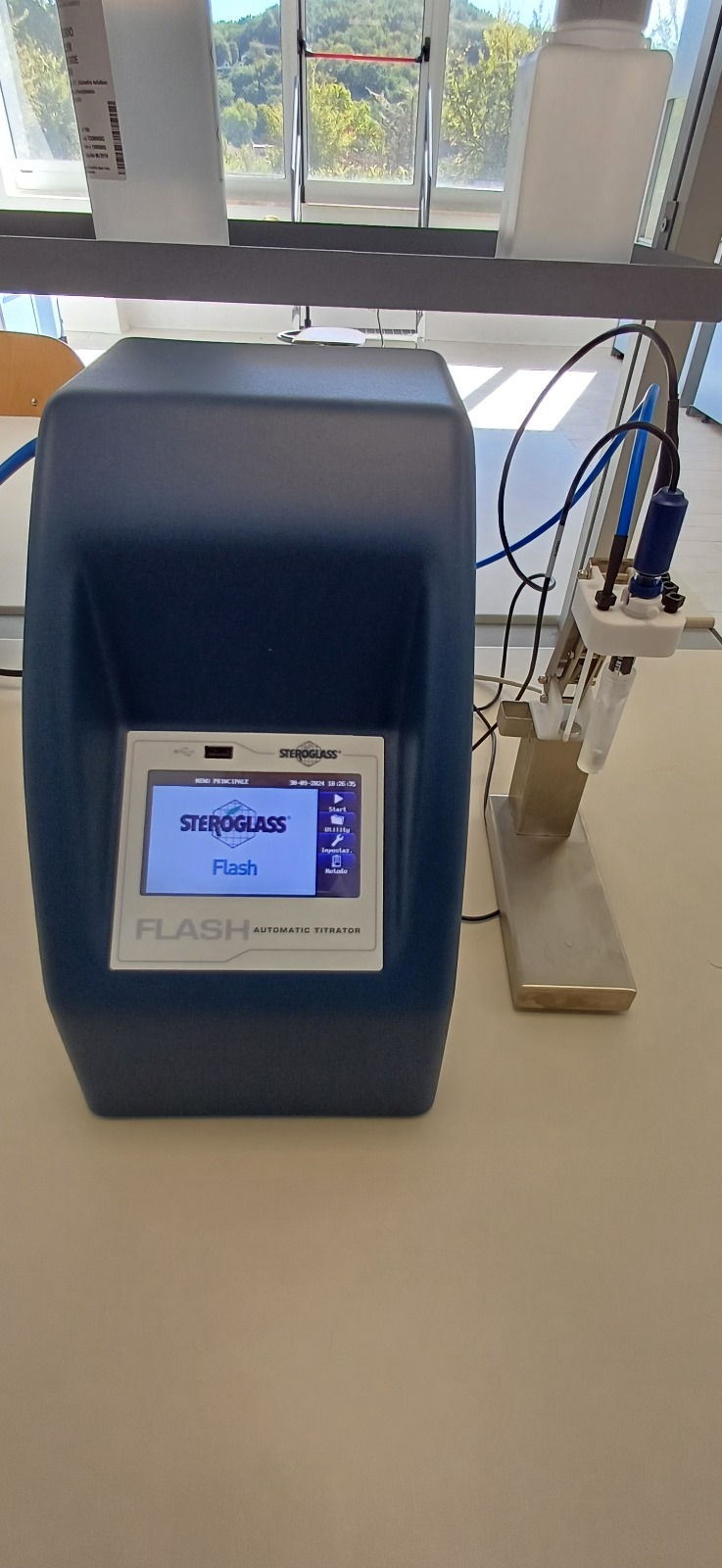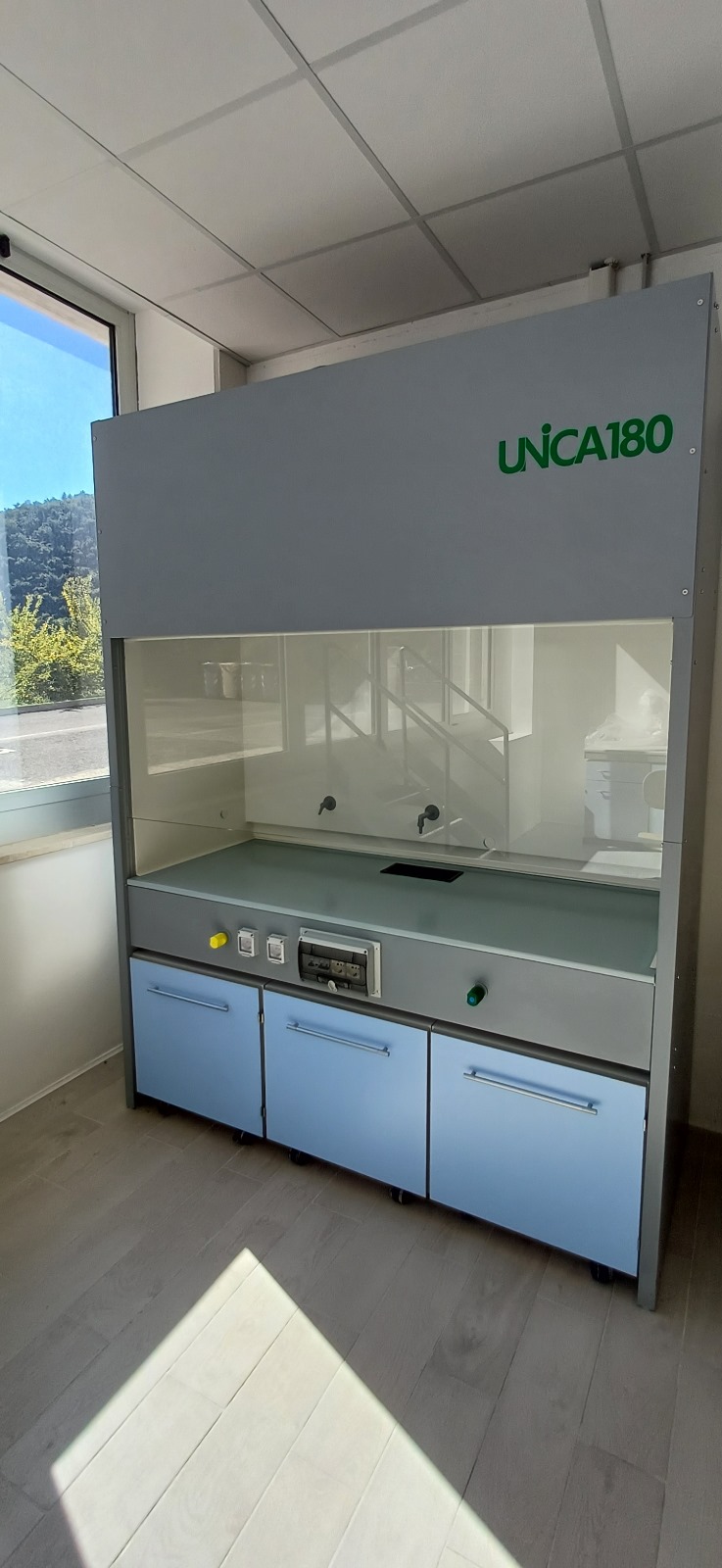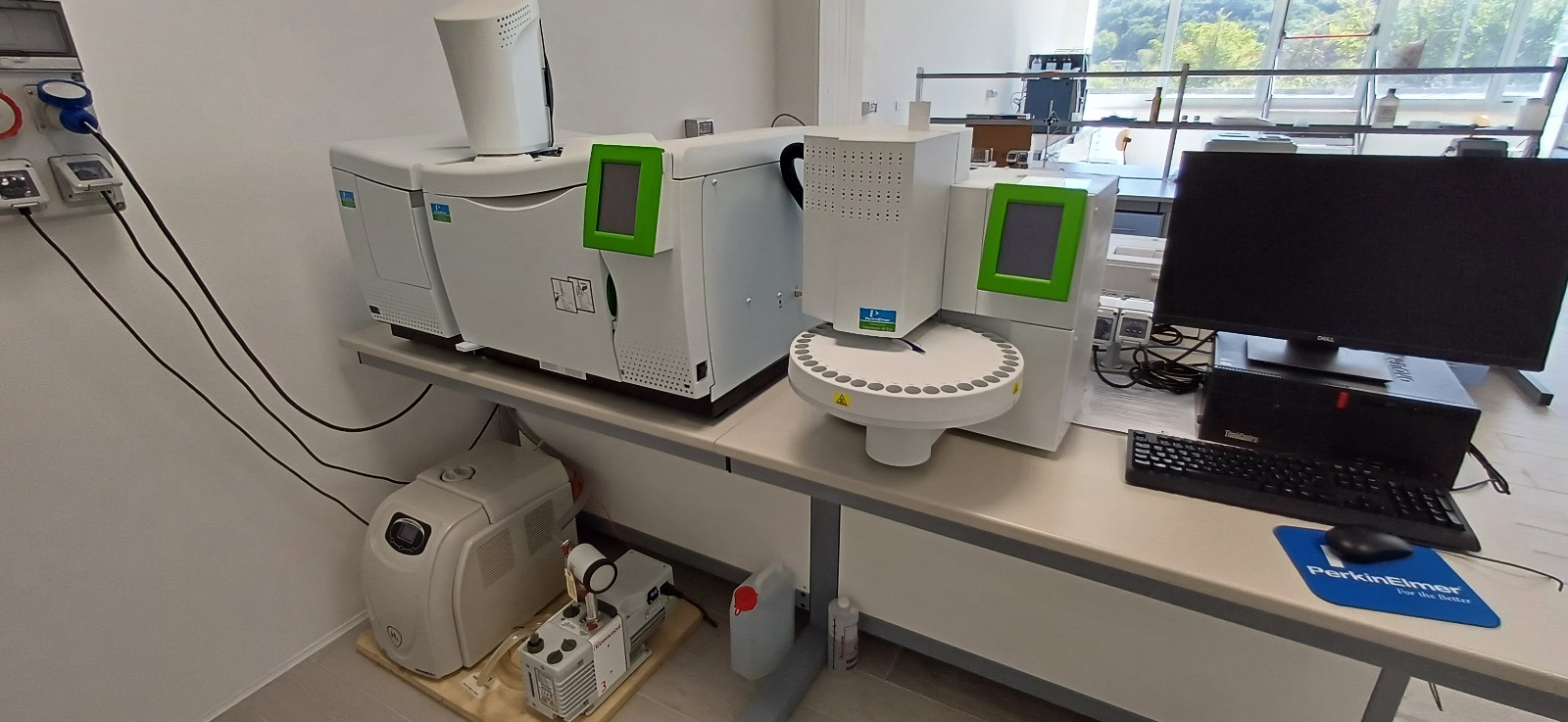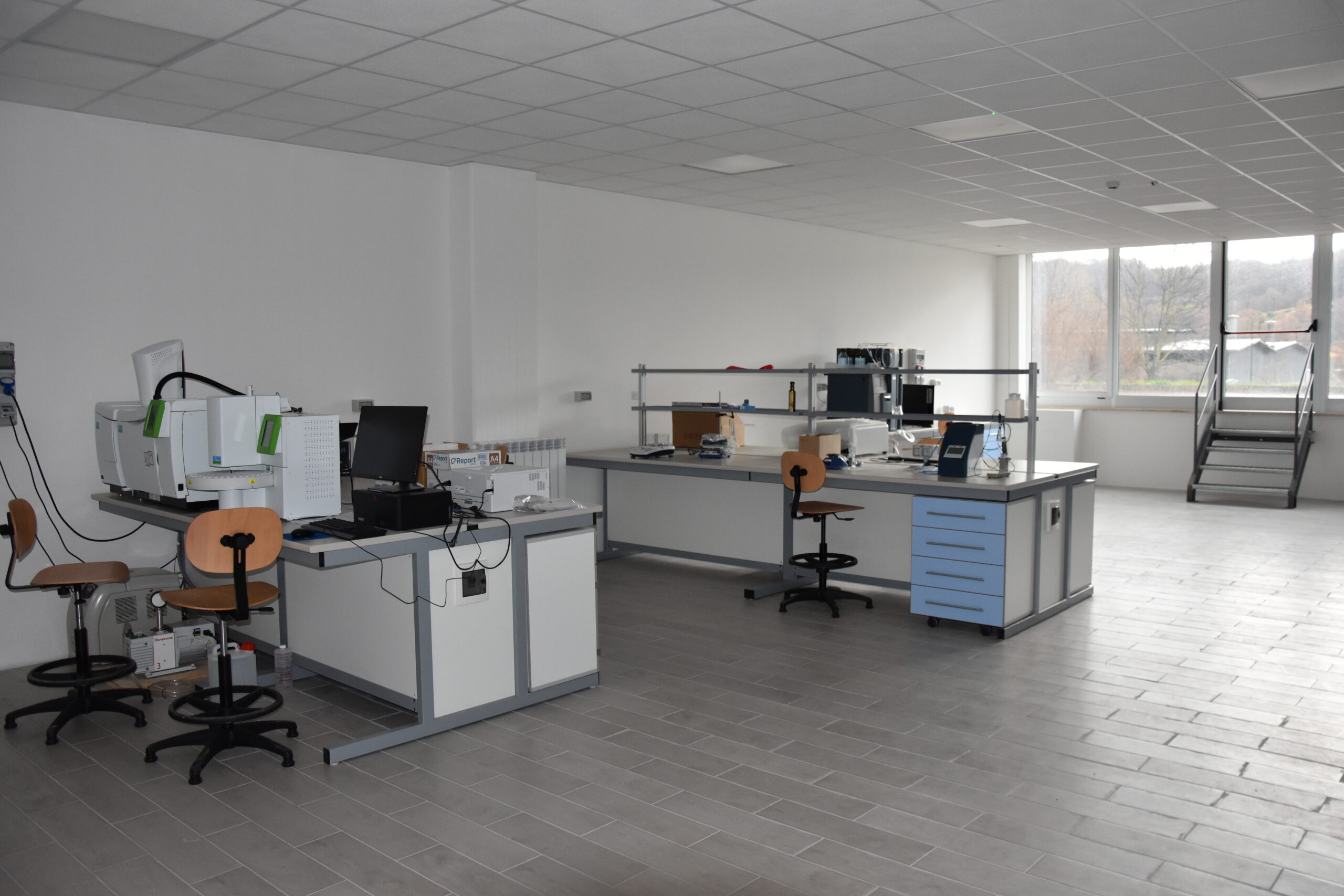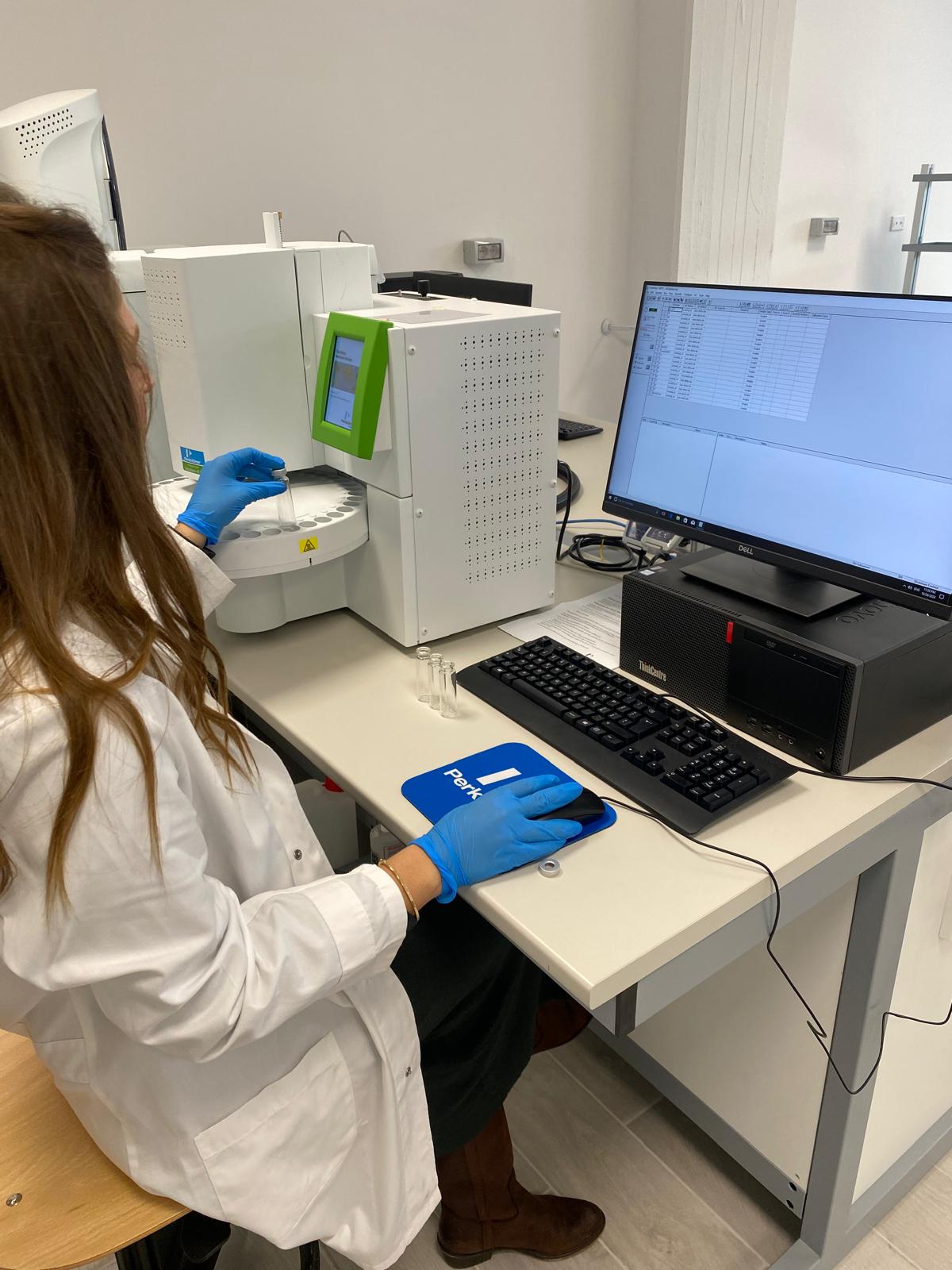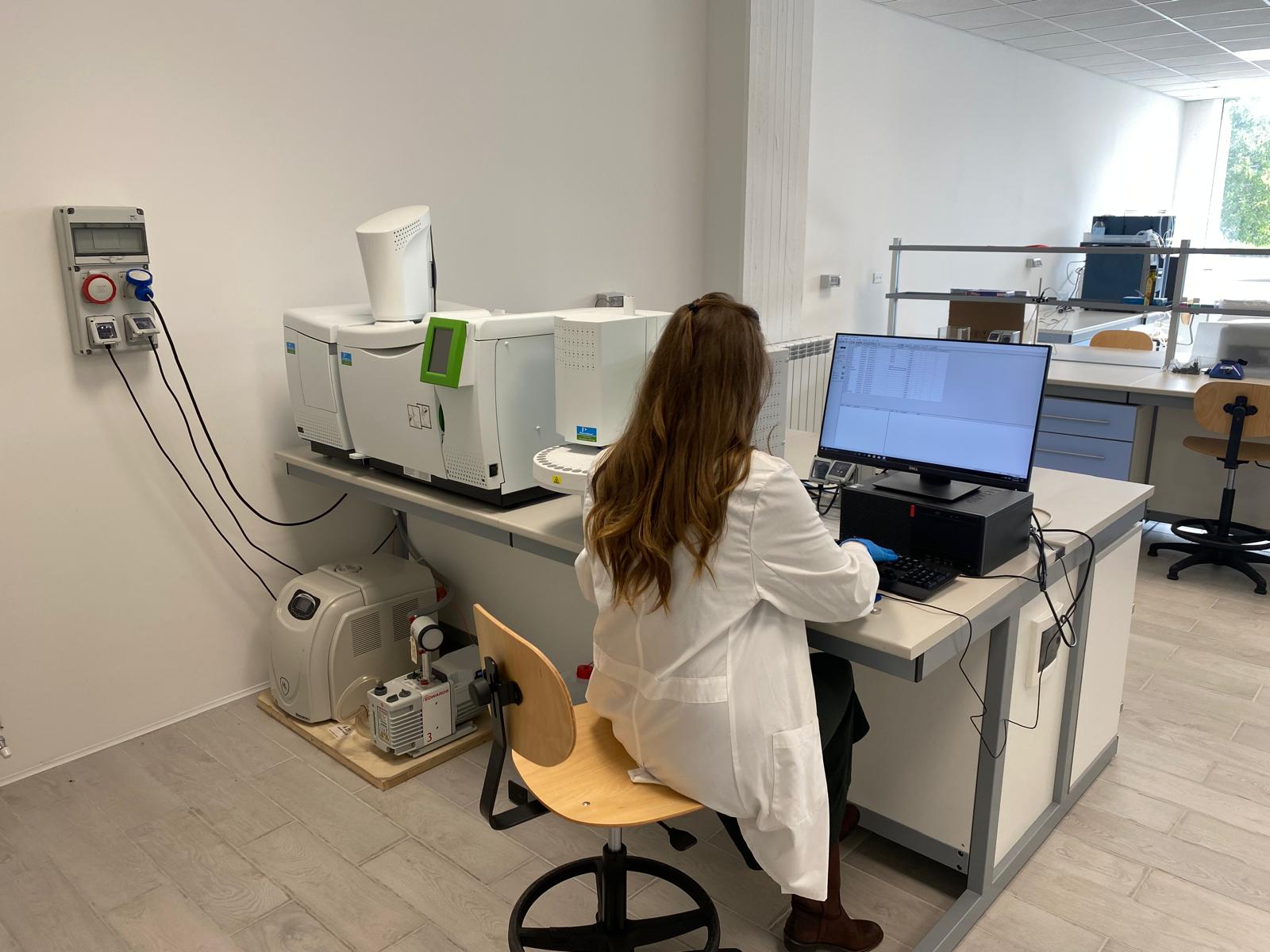
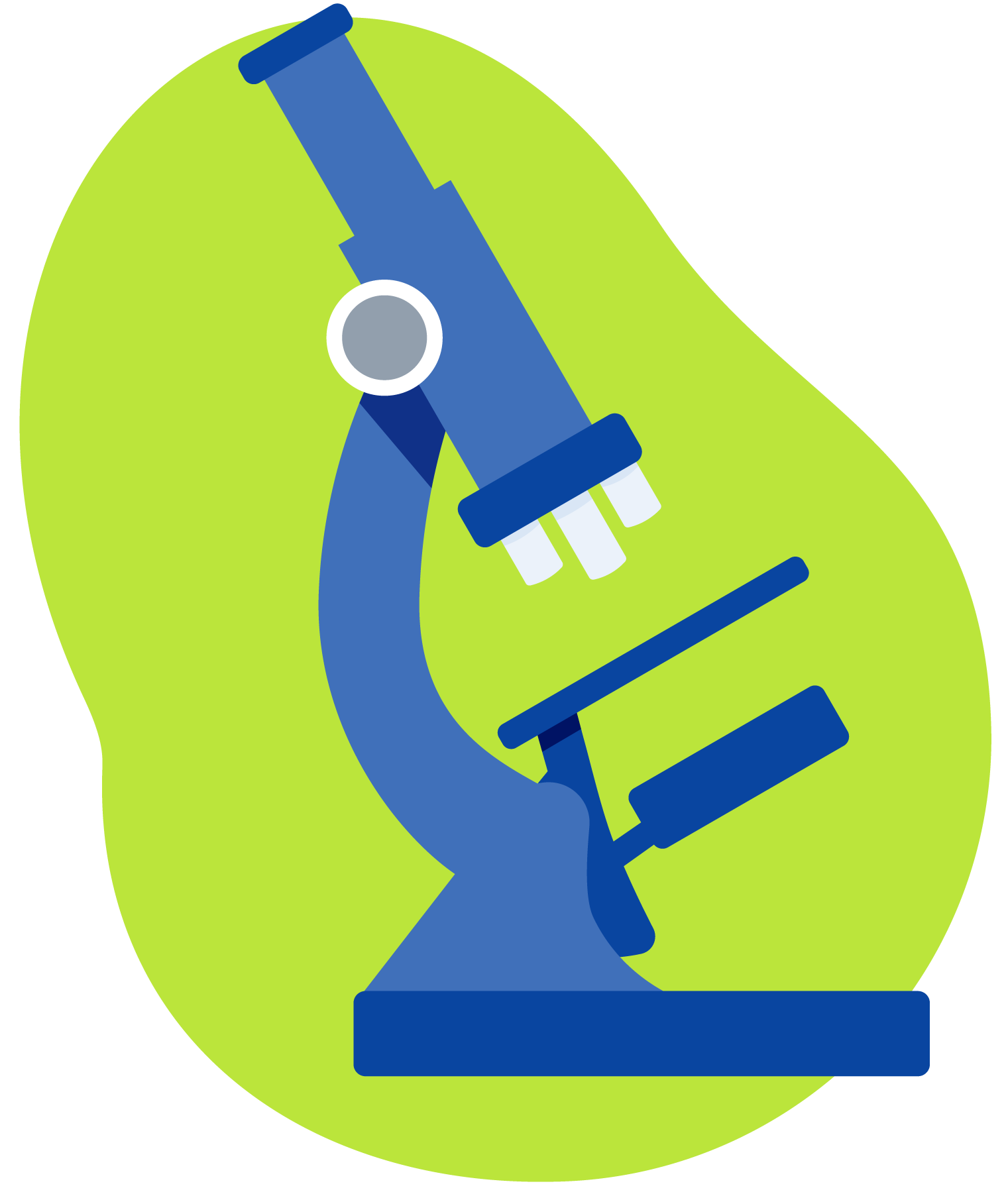
Chemical Laboratory – Analytical
The laboratory focuses on the chemical analysis, both quantitative and qualitative, of various samples. Using techniques such as chromatography, mass spectrometry, and titration, it is possible to accurately identify and quantify the various chemical compounds present. This activity is particularly important in the areas of quality control and research and development of new food products.
Features of the Laboratory
The analytical chemistry laboratory is equipped with a variety of sophisticated instruments, each designed to perform specific analyses and procedures with precision and reliability. The following is an overview of the main equipment used in this setting:
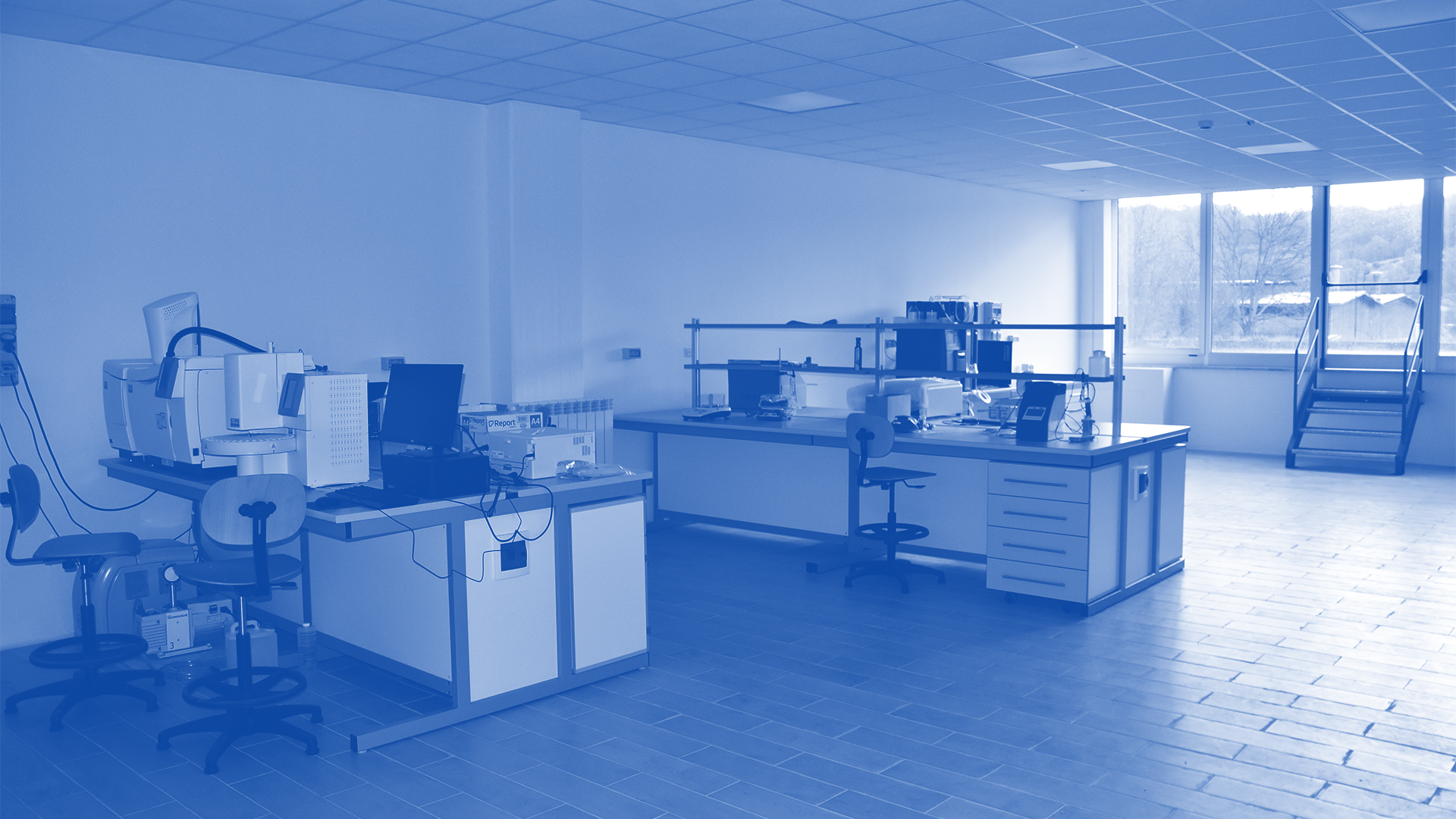
ROTARY EVAPORATOR (ROTAVAPOR)
An instrument used to remove solvents from solutions by a vacuum evaporation process, which reduces the boiling point of the liquid. The rotary evaporator is commonly used to concentrate solutions or recover solvents gently, preventing overheating of heat-sensitive samples.
AUTOMATIC TITULATOR
An apparatus that performs titration in an automated manner, accurately measuring the volume of titrant required to react with a given amount of analyte. This apparatus is particularly useful in acid and base analysis, metal ion and other chemical species assays. Automation provides precise control and ensures high reproducibility in results.
GC-MS (GAS CHROMATOGRAPHY-MASS SPECTROMETRY)
Analytical tool that combines gas chromatography (GC) with mass spectrometry (MS). Gas chromatography separates volatile compounds, while mass spectrometry identifies and quantifies molecules based on their mass and molecular structure. This combination makes GC-MS a powerful tool for complex analyses.
SOXHLET EXTRACTOR
Apparatus used to extract desired compounds from solid materials through cycles of heating and condensing a solvent. During the process, the solvent is continuously distilled and recycled through the solid material until the extraction is complete, making it particularly effective for the analysis of substances in solid matrix.
SPECTROPHOTOMETER
An analytical instrument used to measure the absorbance or transmittance of light from a sample at different wavelengths. It is used for both qualitative and quantitative analysis of chemicals, exploiting the principle of absorption of light by molecules. This instrument is widely used to identify and quantify compounds in solutions.
RANCIMAT
Specialized equipment for determining the oxidative stability of fats and oils. It measures the time required for an oil or fat to deteriorate when exposed to elevated temperatures and air flow. This instrument is critical for evaluating the shelf life of oils and other fat-containing products.
HPLC (HIGH-PERFORMANCE LIQUID CHROMATOGRAPHY)
Essential analytical method that enables the analysis and separation of components of a liquid mixture. It is particularly effective for analyzing chemicals and food products, using a chromatographic column through which the sample is passed under pressure. This process separates components based on their affinity for the stationary and mobile phases, makingHPLC an indispensable tool for complex analyses.
This variety of instruments enables a wide range of experiments to be carried out and significant results to be obtained, supporting research and development in numerous scientific and industrial fields.

